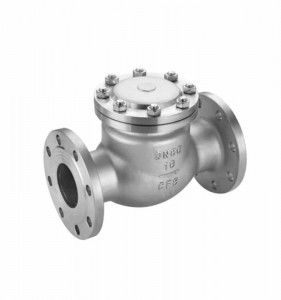In fluid control systems, check valves play a vital role in ensuring smooth and efficient operation of various processes. One type of check valve widely used in industrial applications is the DIN check valve. But how does a DIN check valve work, and how does it differ from other types of check valves?
To understand the function of a DIN check valve, it is important to first understand the basic principles of a check valve. Check valves, also called non-return valves, are designed to allow fluid to flow in one direction while preventing reverse flow. This is accomplished by using hinged or spring-loaded discs that open when the fluid is flowing in the correct direction and close to stop the flow when the fluid is flowing in the opposite direction.
Now, let’s delve into the specifics of how a DIN check valve works. The term “DIN” refers to the German Institute of Standardization, which sets standards for a variety of industrial components, including check valves. DIN check valves are designed and manufactured according to these standards, ensuring their reliability and compatibility with a variety of industrial systems.
One of the key features of the DIN check valve is its swing check design. The design consists of a hinged disc that swings open to allow fluid flow in one direction and swings closed to prevent backflow. The hinge mechanism allows for smooth and efficient operation, minimizing pressure drop and ensuring reliable performance.
In addition to the swing check design, DIN check valves are equipped with a sealing mechanism to ensure a tight seal when the valve is in the closed position. This helps prevent leaks and maintain the integrity of the fluid control system.

Another important aspect of a DIN check valve’s functionality is its ability to operate over a wide range of fluid temperatures and pressures. This versatility makes DIN check valves suitable for a variety of industrial applications from water treatment plants to chemical treatment facilities.
Additionally, DIN check valves are available in a variety of materials, including stainless steel, carbon steel, and brass, to accommodate different fluid types and environmental conditions. This flexibility in material selection enhances the durability and corrosion resistance of din check valves, making them a reliable choice for demanding industrial environments.
In summary, the functionality of a DIN check valve is based on its swing check design, sealing mechanism, and fluid temperature and pressure versatility. By adhering to DIN standards and combining these key features, DIN check valves provide efficient, reliable check valve solutions for a variety of industrial applications.
In summary, the functionality of a DIN check valve is based on its swing check design, sealing mechanism, and fluid temperature and pressure versatility. By adhering to DIN standards and combining these key features, DIN check valves provide efficient, reliable check valve solutions for a variety of industrial applications.
Post time: Mar-11-2024



